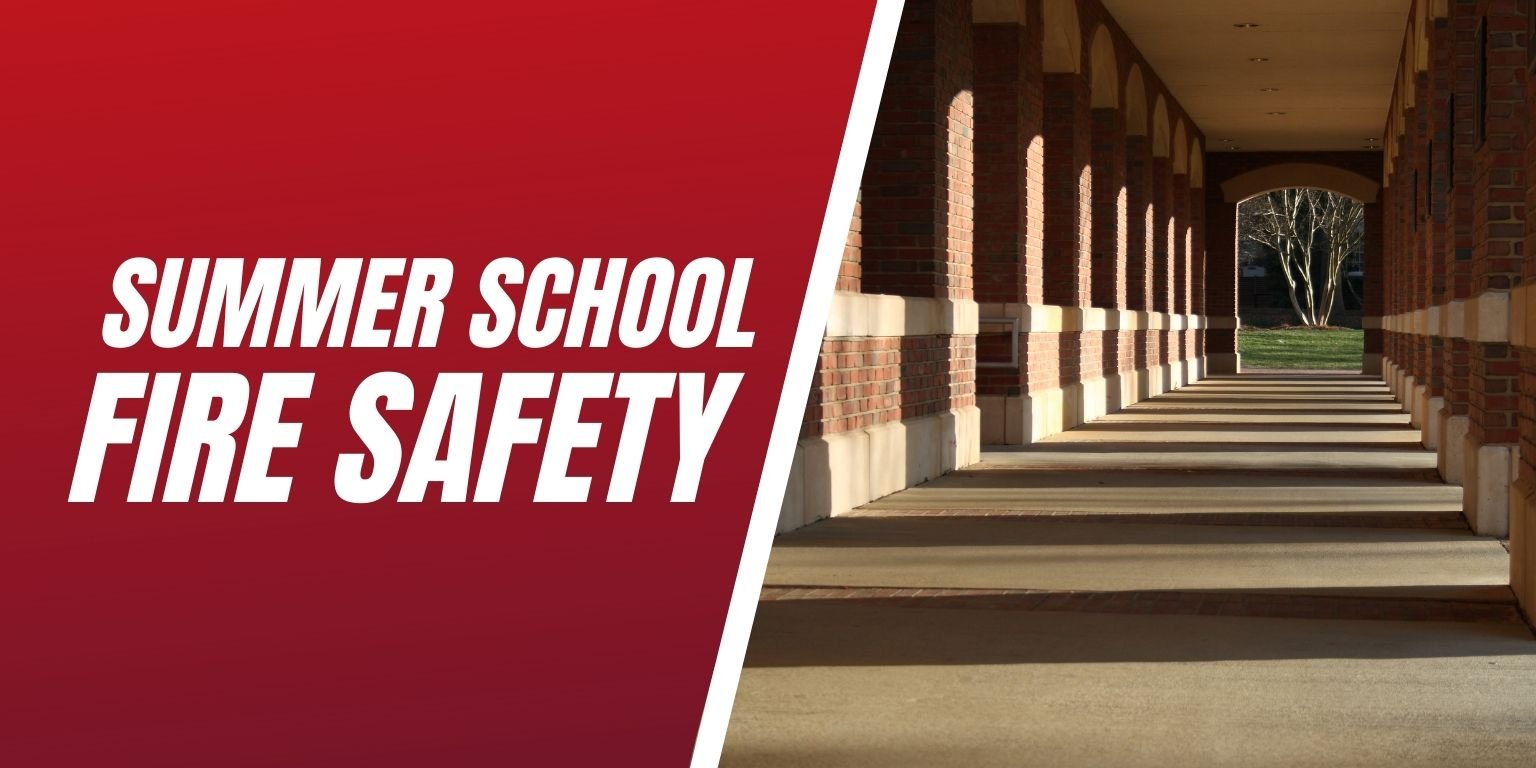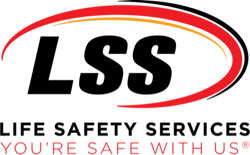
School may be out for summer, but summer school is in session. Fire safety is top priority within the education industry of all levels. As we know, an educational environment consists of large groups of people in a variety of specific areas within a building. In the event of a fire emergency, there must be a reliable fire protection system, such as fire doors and fire dampers, in place to ensure a safe evacuation route for all individuals within the building.
Facility managers on college campuses understand that fire safety is no small task. There is a lot of ground to cover with dozens of classrooms, administrative, recreational, and residential buildings on your campus. Both Fire and smoke can spread quickly, which is why it is important for an educational campus to maintain its fire barrier systems in order to combat a fire and prevent it from causing unnecessary damage.
Fire Door Inspections and Repairs
Fire doors prevent the spread of fire and smoke between the facility’s fire barriers. They serve as a regular door by giving you an easy outlet during a fire, while compartmentalizing the building to help prevent the spread of fire, smoke and toxic fumes. The best places for a fire door is leading to a stairwell or any horizontal exits, hazardous areas, hallways or corridors, and any fully enclosed room to another.
According to The National Fire Protection Association (NFPA) 80 requires that, “Fire door assemblies must be inspected and tested annually, with a written record of the inspection signed and kept for the inspection by the AHJ.”
NFPA 80 – Fire Door Inspection Guidelines
- Labels are clearly visible and legible.
- No open holes or breaks exist in surfaces of either the door or frame.
- Glazing, vision light frames, and glazing beads are intact and securely fastened in place, if so equipped.
- The door, frame, hinges, hardware and noncombustible threshold are secured, aligned, and in working order with no visible signs of damage.
- No parts are missing or broken.
- Door clearances do not exceed clearances listed in 4.8.4 and 6.3.1.7.
- The self-closing device is operational; that is, the active door completely closes when operated from the full open position.
- If a coordinator is installed, the inactive leaf closes before the active leaf.
- Latching hardware operates and secures the door when it is in the closed position.
- Auxiliary hardware items, which interfere or prohibit operation, are not installed on the door and frame.
- No field modifications to the door assembly have been performed that void the label.
- Meeting edge protection, gasketing and edge seals, where required, are inspected to verify their presence and integrity.
- Signage affixed to a door meets the requirements listed in 4.1.4.
All fire door repairs need to take place as soon as possible due to non-compliance. Hence, 90% of fire rated doors inspected are not in compliance with NFPA 80 (per LSS inspection data). LSS offers fire and smoke door repairs based on NFPA 80.
If the fire door cannot be repaired, our expert technicians will assess the door and provide all the necessary information. Rest assured, you will be equipped with the right information to make an informed decision about complete fire door replacement or major repair.
Fire/Smoke Damper Inspections and Repairs
Fire dampers are used in ducts to prevent the spread of fire within the duct work through fire-resistance rated walls and floors. When the temperature rises, it melts the fusible link, which shuts the damper and prevents the spread of flame. Similarly, smoke dampers are used in duct work designed to resist the passage of air and smoke. Typically a smoke detector will send a signal to the smoke damper that will close by an actuator when smoke is detected.
NFPA 80 & 105 – Fire and Smoke Damper Guidelines
- Fire Damper - NFPA 80 – Section 19.4 - Each damper shall be tested and inspected one year after installation. The test and inspection frequency shall then be every 4 years.
- Smoke Damper - NFPA 105 – Section 6.5 - Each damper shall be tested and inspected one year after installation. The test and inspection frequency shall then be every 4 years.
Any damper to be found deficient during routine maintenance and inspection must be repaired as soon as possible. According to LSS statistic, nearly 22% of dampers fail during a routine fire and smoke damper inspection. So, it is not uncommon to have a list of deficient dampers that are in need of repairs after facility performance testing.
It is important to stay in compliance with the local and state building codes. LSS can ensure your dampers are working properly and are code compliant.
Allow LSS Life Safety Services to assist you in keeping all of your buildings and facilities located on your school campus safe and compliant this summer. Our job is to give you a peace of mind knowing your students and teachers are safe during a fire emergency.

